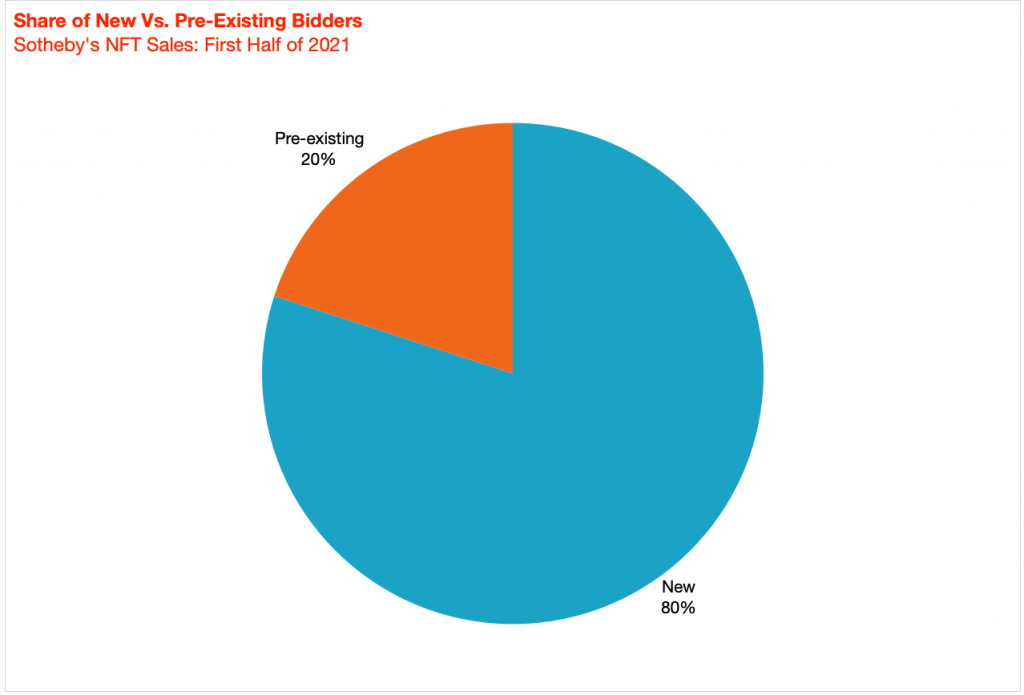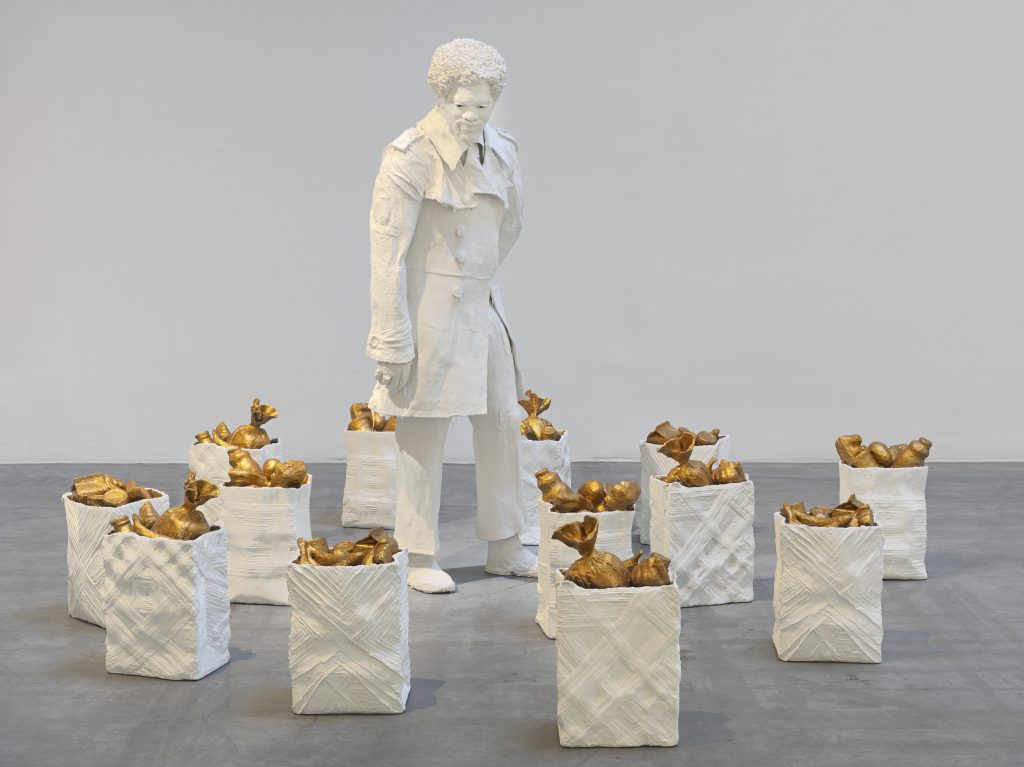The Back Room
The Back Room: Let’s Get Digital
This week: A spotlight on Platform, NFTs vacuum in new clients, MISA turns online sales experimental, and much more.

This week: A spotlight on Platform, NFTs vacuum in new clients, MISA turns online sales experimental, and much more.

Tim Schneider

Every Friday, Artnet News Pro members get exclusive access to the Back Room, our lively recap funneling only the week’s must-know intel into a nimble read you’ll actually enjoy.
This week in the Back Room: A spotlight on Platform, NFTs vacuum in new clients, MISA turns online sales experimental, and much more—all in a 6-minute read (1,724 words).
_______________________________________________________________________________________
![Platform's leadership team [L to R]: Marlene Zwirner, Lucas Zwirner, and Bettina Huang. Photo: Martyna Szczesna.](https://news.artnet.com/app/news-upload/2021/05/2.-Marlene-Zwirner-Lucas-Zwirner-Bettina-Huang_Photo-by-Martyna-Szczesna-683x1024.jpg)
Platform’s leadership team [L to R]: Marlene Zwirner, Lucas Zwirner, and Bettina Huang. Photo: Martyna Szczesna.
There has been no shortage of hard evidence that online art sales boomed during the pandemic. But there has been a relative shortage of info about the most talked-about online marketplace to emerge during COVID: Platform, the click-to-buy enterprise from David Zwirner.
That changed this week, when my colleague Katya Kazakina landed on Platform as the subject of her latest column. In honor of the initiative’s efforts to streamline online art discovery and sales, here’s a compact overview of what we now know.
How It Started
Platform was conceived early in the pandemic as a “charitable initiative to help midsize galleries at a time when art fairs, their major source of revenue, had been cancelled indefinitely,” Katya writes. But with most galleries lacking robust digital infrastructure, as well as the capital and expertise to build it in a crisis, Zwirner stepped in by creating a (you guessed it) platform for them.
The mega-gallery originally offered Platform gratis to smaller dealers in New York, London, and Los Angeles. Sales from the inaugural offerings totaled $1.2 million, Zwirner said at the time. With goodwill being such good business, the gallery decided to make Platform permanent.
Lucas Zwirner, who oversaw the project’s launch, framed Platform as an alternative to regional art fairs, which can often cost a gallery “$25,000 to $50,000, potentially” and end with only a fraction of the inventory selling. Why take that risk on the road if there’s a better way to sell to a new audience remotely?
How It Works
Every month, Platform offers 96 fresh works sourced from 12 galleries. (Each dealer consigns eight total works by two artists.) The sales split is 20 percent to Platform, 80 percent shared by partner gallery and artist.
The consignment process is nuanced, deliberate, and sometimes drawn-out. “Platform mostly wants popular artists, according to participating dealers, and it often asked for new pieces to be created especially for the site,” Katya writes.
What about the user experience? Platform general manager Bettina Huang (who took over the venture last fall) said the company set out to provide what its target audience—mostly young buyers of online luxury goods nevertheless new to collecting art—“expect when they’re shopping any category online.” This means…
Platform markets through email newsletters, original content, and social-media ads, but it declined to provide data on its distribution lists. Which leads us to…
How It Handles Data
According to Huang, Platform has so far brought in…
But questions remain, including how much Platform helps galleries expand their audience. The firm declined to reveal sales and revenue figures, saying they were proprietary. Privacy laws also prevent Platform from sharing most data on inquiries and sales with either the participating galleries or even David Zwirner, according to a spokesperson. (Platform is a separate company from the mega-gallery.)
But when “a sizable number of waitlist inquiries on [sold-out] works by a specific artist” accrues, the spokesperson continued, Platform contacts the representative galleries about making additional pieces available. If they accept, waitlisted users are notified, and more business gets done.
_______________________________________________________________________________________
While some galleries grumble about Platform’s distinct limits on data distribution, others are too pleased with the sales and exposure to fixate on the downside. Simply being blessed by the association with Zwirner may carry longer-term dividends for featured talent and participating dealers. “It’s great visibility for the artists,” said Allegra LaViola, owner of New York gallery and Platform alum Sargent’s Daughters. “Things sold. Why not?”
Any counter may depend on dealers’ sensitivity to sacrificing control. In that sense, it’s worth remembering that Platform left its charitable origins behind long ago. Now, it’s just business. Adjust your expectations accordingly.
_______________________________________________________________________________________
Here’s what made a mark in the latest Wet Paint (and elsewhere).
Art Fairs
Auction Houses
From September 10–21, Sotheby’s will hold a 200-lot online sale of works, design objects, antiquities, and sundry other categories from the collection of London dealing duo Peter and Leonora Petrou.
Galleries
White Cube added Tokyo-based painter Minoru Nomata to its talent pool; Nomata’s debut solo show with the gallery will be held in Hong Kong in September.
Lehmann Maupin‘s roster in Asia now includes whimsical sculptor Tom Friedman (who continues to work with Luhring Augustine in New York and Stephen Friedman in London).
Buzzy Surrealist painter Jamian Juliano-Villani will launch her own East Village gallery, called O’Flaherty’s, on September 8, with plans to operate for one year only. The venture’s first show will be a solo number by Los Angeles mainstay Kim Dingle.
New York’s Fridman Gallery now reps figurative painter Sahana Ramakrishnan, whose solo bow at the space will take place in November 2022.
Denny Dimin now represents multidisciplinary artist Pamela Council.
Staying in Tribeca, Postmasters gallery will hire Danielle Polovets, a marketing and business-development exec at Phillips, to be its next director.
Institutions
ICYMI, New York museums and cultural institutions now require visitors to show proof of COVID vaccination or a recent negative test before entry.
The Gwangju Biennale Foundation will be led by ex-minister of culture, tourism, and sport Park Yang-woo, after an investigation into his predecessor, Sunjung Kim, confirmed allegations of mismanagement.
The Korean pavilion at next year’s Venice Biennale will highlight artist Yunchul Kim (and possibly others yet to be named). The pavilion will be overseen by scholar Lee Young-chul, the first director of the Nam June Paik Art Center.
Performa named artist (and major donor) Rashid Johnson chair of its board; Todd Bishop, former deputy director of MoMA, will be the org’s next treasurer.
The Rothko Chapel received a $3 million gift toward its restoration from WordPress creator and Houston native Matt Mullenweg.
The M.F.A. Boston tapped Marina Tyquiengco, a curatorial assistant in its contemporary art department, to be its first-ever assistant curator of Native American art.
NFTs and More
_______________________________________________________________________________________

© Artnet News 2021.
Sotheby’s released select performance results from the first half of 2021 this week, and among the highlights was stark evidence of why auction houses and galleries alike are so enthralled with crypto: Sotheby’s reported that roughly 80 percent of bidders in its NFT auctions were new to the house.
While the den of Drahi did not relay any data about the overall number of participants in these sales, the distribution of paddle-wielders was so slanted that quantity becomes a secondary issue. At 80 percent fresh faces, even a modestly sized pool of bidders would serve up a tremendously rich set of new relationships to try to build on. Now the even harder worker of transitioning the crypto crowd into other assets begins…
_______________________________________________________________________________________
“We share some of the same hallucinations. Similar delusions too. Different pathos. Different addictions, but complementary: coffee vs. psilocybin. Economically, it’s very simple, and we both like the math of paid artists.”
—Mike Egan on the ethos behind Egan and Rosen, his new joint gallery with dealer Meredith Rosen on the Upper East Side, in this week’s Gray Market.
_______________________________________________________________________________________
König Galerie’s wild new online sales platform, MISA, will offer everything from algorithm-driven pricing and works by unrepresented artists, to fractional-ownership shares and NFTs. (Artnet News Pro)
_______________________________________________________________________________________
Calderón Ruiz, opening September 7 near the South Street Seaport, will be the next in a very small line of New York galleries devoted to championing Latinx artists. (ARTnews)
_______________________________________________________________________________________
Whether you are excited or annoyed by museums’ efforts to leverage NFTs, this deep dive into crypto campaigns by the Hermitage, the Uffizi, and the Whitworth will make you feel even more that type of way. (Artnet News Pro)
To vicariously experience the whirlwind drama of buying work by the Y.B.A.s in their heyday, allow Tracey Emin to regale you with how she almost blew up the most important deal of her young career over Margaret Thatcher adverts. (The Art Newspaper)

Karon Davis, Bobby Seale and The People’s Free Food Program (2020–21). Photo by Cooper Dodds and Genevieve Hanson, courtesy the artist and Jeffrey Deitch, New York, © Karon Davis.
_______________________________________________________________________________________
Date: 2020–21
Seller: Jeffrey Deitch
Price: Unknown
Acquired by: Pérez Art Museum Miami
_______________________________________________________________________________________
PAMM announced the acquisition of 11 works for its permanent collection this week, and the headliner (for me, anyway) is fast-rising sculptor and Underground Museum cofounder Karon Davis’s Bobby Seale and The People’s Free Food Program. The installation consists of a life-size plaster sculpture of the Black Panther Party cofounder surrounded by bags brimming with groceries, an emblem of the Panthers’ historic efforts to fight food insecurity in the 1970s. The work was featured in Davis’s first solo gallery exhibition in New York this spring, at Jeffrey Deitch (who placed Bobby Seale with PAMM).
“It’s such a significant piece in terms of concept, history, and execution,” PAMM director Franklin Sirmans told Artnet News. “Its overall message is tied to our mission in many ways. It’s highlighting history with a beautiful work of art that allows people to dig really deep, to learn something, and to reflect upon the politics of our shared history.”
By adding Bobby Seale, PAMM became the fourth major U.S. public institution to enter work by Davis into its holdings; other pieces had already been acquired by the Brooklyn Museum, the Hammer Museum in Los Angeles, and the M.F.A. Houston. Notably, the artist’s output still has yet to appear at auction, according to the Artnet Price Database. But with demand heating up among collecting institutions and collectors alike, her days of auction anonymity are likely numbered in low digits.
_______________________________________________________________________________________